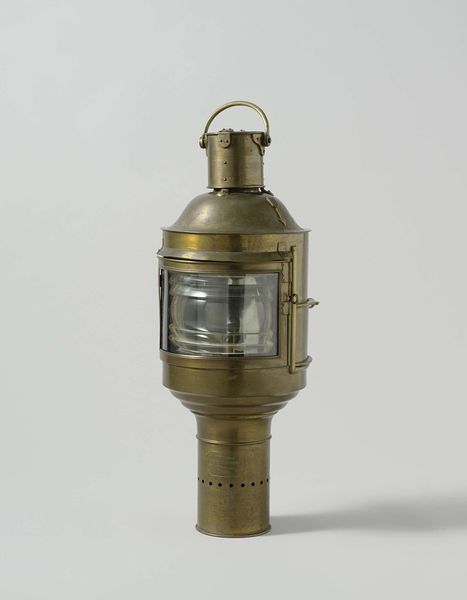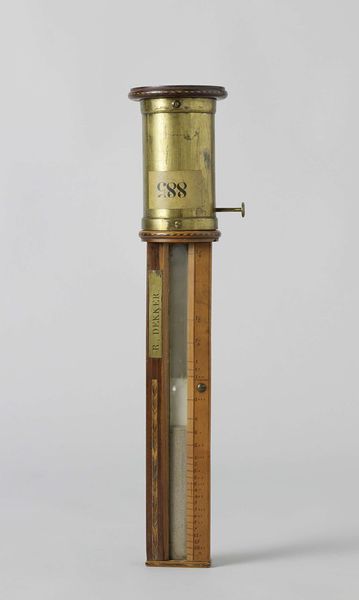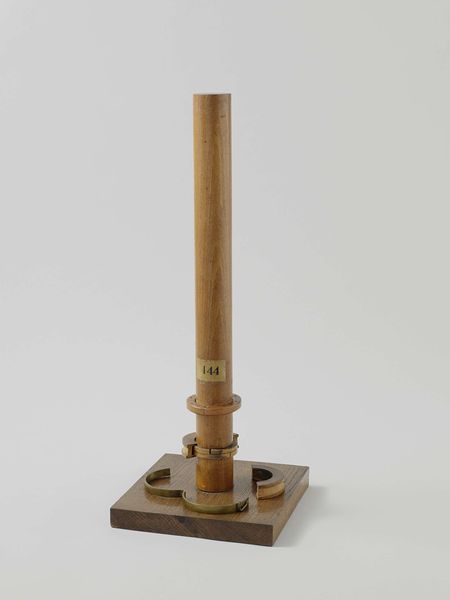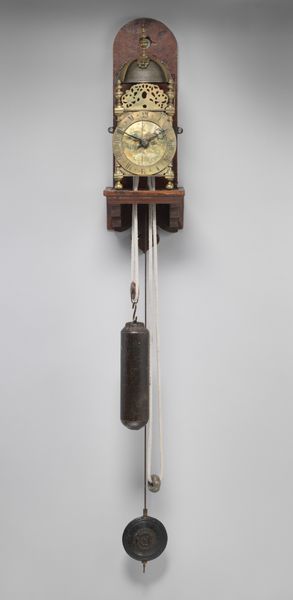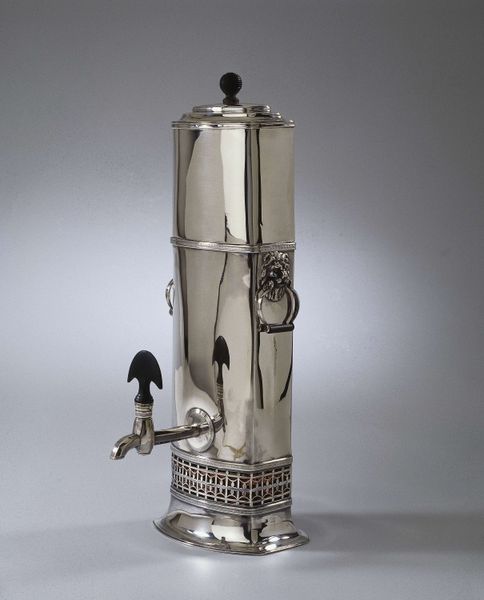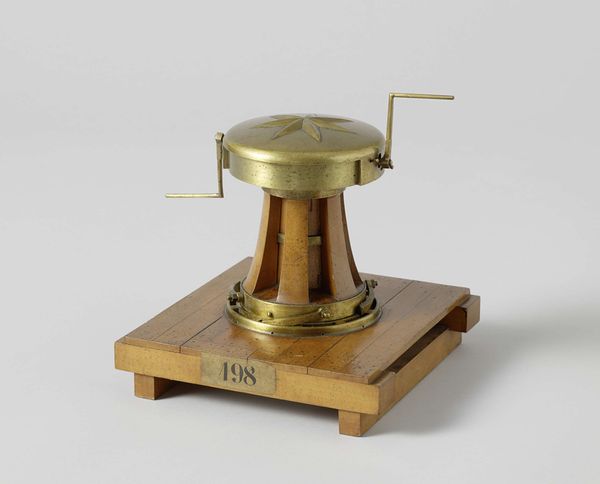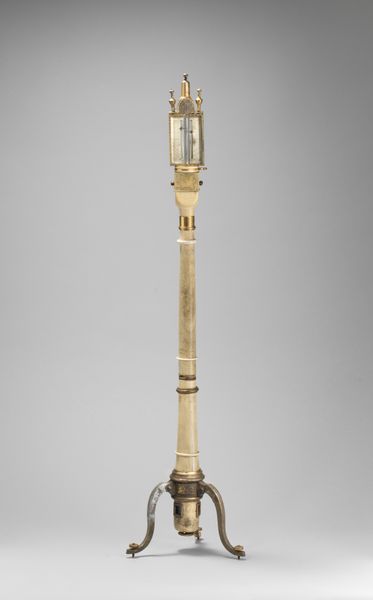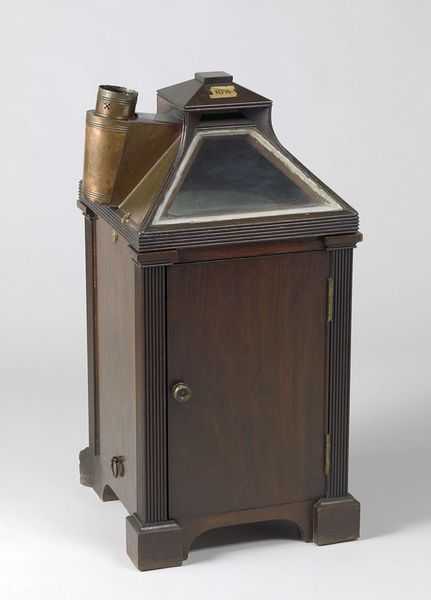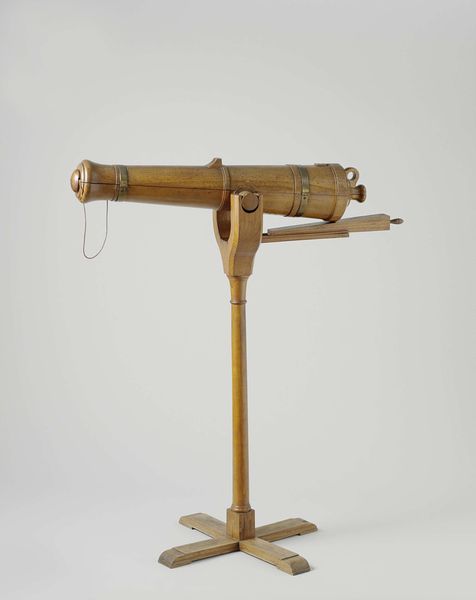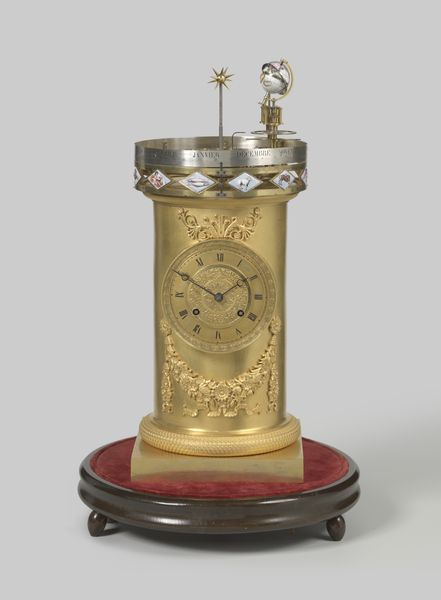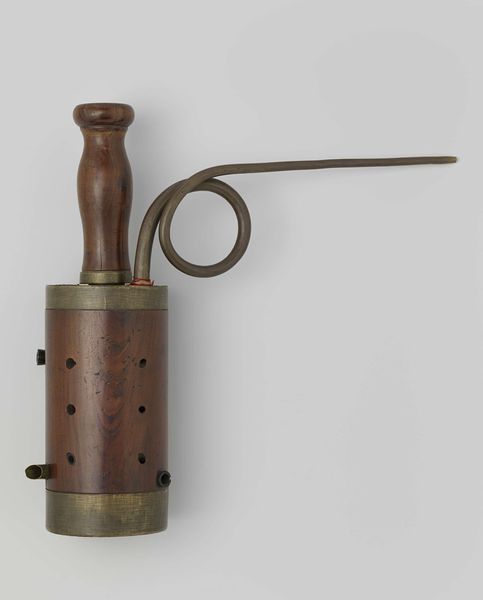
metal, bronze, sculpture
#
metal
#
sculpture
#
bronze
#
sculpture
Dimensions: height 56 cm, width 25 cm, depth 13 cm
Copyright: Rijks Museum: Open Domain
This is a salinometer, likely made in Britain in the late 19th century by A.P. How. Measuring 56 cm in height and made of brass, it was an instrument used to measure the salinity of water, and therefore its density. It is important to remember that the 19th century was a time of great imperial expansion, with Britain at its forefront. Colonial expansion was underpinned by maritime exploration and trade, which required precise instruments for navigation and safety. A salinometer like this would have been crucial for determining whether a ship's boilers were operating safely, indicating the effectiveness of desalination systems. The very existence of this object speaks to the importance of scientific advancement in supporting imperial ambitions, connecting the development of precision instruments with the broader socio-political context of colonialism and maritime power. Understanding the salinometer requires archival research into the maritime industries and the scientific instrument makers, linking art to its function within a specific institutional and historical framework.
Comments
No comments
Be the first to comment and join the conversation on the ultimate creative platform.
